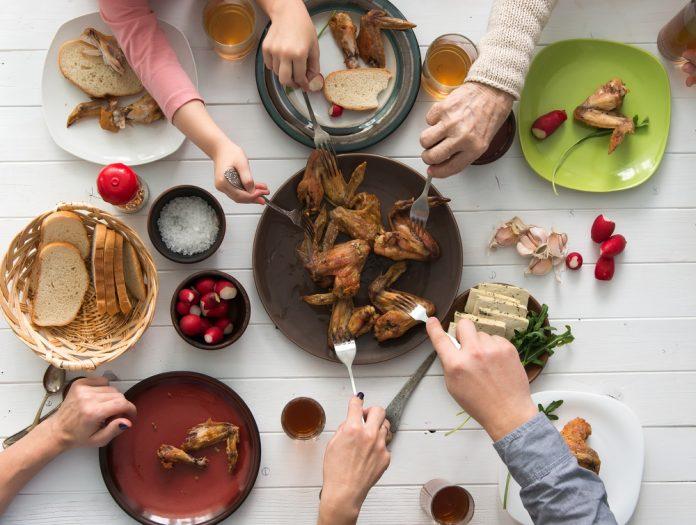 Even as a child-feeding expert, I have no idea why so many kids just don’t like their foods to touch. Another mystery that stumps me when feeding toddlers and preschoolers is why when sauces touch foods it’s considered unacceptable, but dipping is fun and yummy. Meals for kids can become a struggle during these times. These are just two of the great unsolved mysteries of children’s eating habits.
Even as a child-feeding expert, I have no idea why so many kids just don’t like their foods to touch. Another mystery that stumps me when feeding toddlers and preschoolers is why when sauces touch foods it’s considered unacceptable, but dipping is fun and yummy. Meals for kids can become a struggle during these times. These are just two of the great unsolved mysteries of children’s eating habits.
You’ll drive yourself crazy if you try to figure out why it is this way. Believe me. It’s equally futile to try to rationalize with your child that peas that have touched chicken and that peas that haven’t touched chicken are still just peas!
So don’t waste your time (and brain cells).
Leave it be and trust that (eventually) they’ll grow out of it. In the meantime, you aren’t relegated to eating sauce-free meals. Or, making your child a completely different dish every night. Instead, serve meals for kids in the form of deconstructed dishes.
What’s A ‘Deconstructed’ Dish?
With deconstructed dishes, you’re still serving your child all the same components of a meal but in a manner so that each individual unit is not touching.
Take a beef and broccoli stir-fry for example.
When making the beef and broccoli stir-fry, cook a small amount of the meat, broccoli and other veggies in the pan before you add the sauce. Remove these and set them aside. Continue cooking the stir-fry with the rest of the ingredients and sauce, leaving the meat, broccoli and other veggies out.
On your child’s plate place each of the items in little piles so that they are not touching each other, i.e. some beef, broccoli, other veggies, plain rice, and a small amount of sauce (perhaps in a dipping container like a small ramekin or saucer).
And, place a very small amount of the stir-fry with all the foods touching with the sauce on it (like you are eating it). Viola! Deconstructed meals for kids.
How Deconstructed Meals For Kids Work
“Deconstructed” meals are a successful picky eater strategy because:
- They allow you to eat a wide variety of dishes
- They allow your child to join you in sharing dishes
- They make your child feel confident with food because s/he has control over what ingredients s/he does and doesn’t eat.
This is a fantastic strategy at every meal. The result is calmer, more enjoyable meals (for everyone). Also, it helps kids choose on their own whether or not they want to try new foods.
For More Picky Eating Resources, Check Out:
- Solve Picky Eating With These 5 Easy Tips!
- Don’t Give Up On Your Kids Eating Vegetables
- Getting Picky Eaters to Try New Foods Using the Rotation Rule
- Why Are Some Kids Picky Eaters?
- Use Nibble Trays to Help With Picky Eating


